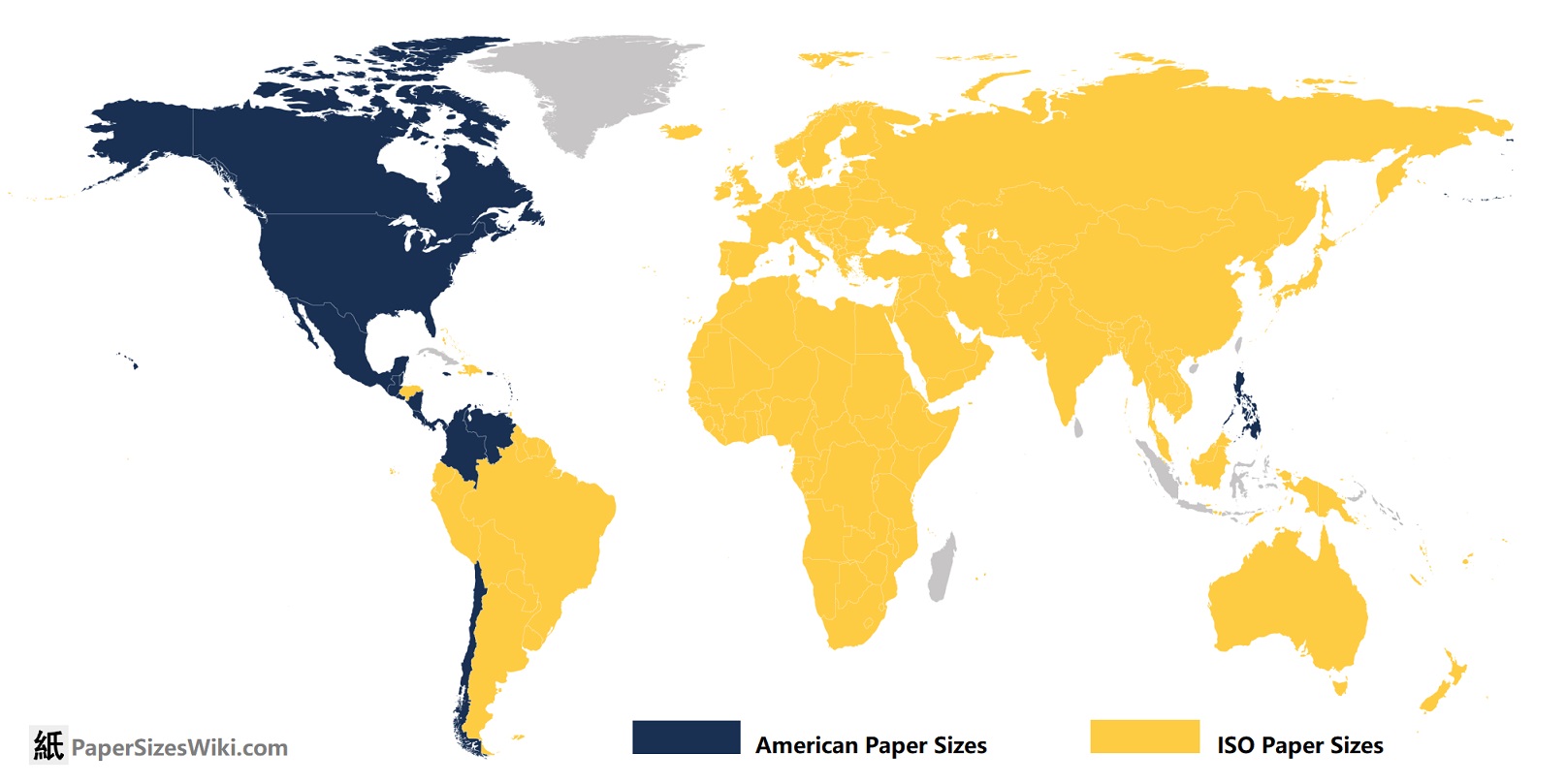There are a couple I have in mind. Like many techies, I am a huge fan of RSS for content distribution and XMPP for federated communication.
The really niche one I like is S-expressions as a data format and configuration in place of json, yaml, toml, etc.
I am a big fan of Plaintext formats, although I wish markdown had a few more features like tables.
I like the Doxygen’s implementation and extension of Markdown. Pair it with PlantUML and you have something worth being a standard.
XMPP, RSS, …
For RSS I honestly don’t see a point, at least for me. What’s the use for having update feeds in a unified format when I still have to go to each fucking site to view the full text? I completely see the point of RSS when all I need is in the feed. But I hate going from different UI to different UI to get the full content. I want something like inoreader.com for self-hosting.
Miniflux is likely to tick most of your boxes. It’s self hostable and can download the full article without extra clicks / having to visit the source.
What’s the use for having update feeds in a unified format when I still have to go to each fucking site to view the full text
This has nothing to do with RSS, it is the author’s choice. It’s like someone who posts links to their articles on Twitter / Facebook / Reddit, same thing. The platform doesn’t prevent you from putting the entire content there, and in fact, many do, especially with RSS.
One benefit of RSS though is that because it is an open protocol, the problem you mention already has solutions, which auto fetch the articles for you. That wouldn’t be possible without an open protocol like RSS
Moreover, I’d argue even with that, RSS is still a huge plus. To have all your content’s headlines in one UI, and potentially you can filter or sort them however you want, that’s pretty awesome.
RSS works great for me though.
I have an app on my not-so-smart phone to read news when commuting. It is not a long journey so I just want to have a quick glance at the headlines and read the actual articles that I want to. There are only 6 sites that I am interested, but still will take quite some work to crawl from the proper websites. RSS in turn is unified so I don’t need to worry about their website layouts, formats, etc. It also gives me an URL to the actual content which I can use readability/reader mode library to parse and further reduce unnecessary contents.
Quite the opposite, I hope more informational sites offer/keep RSS! (Some removed RSS typically after a revamp, design change)
Mastodon offers rss for both keywords and users
The content of the feed depends on the content creator, not on RSS.
XMPP is not a good protocol though. There’s a reason nobody uses it anymore.
I think it’s going to be interesting when the EU tries to enforce interoperability between the major messaging platforms. What are they going to do? They have some ridiculous targets like interoperable end-to-end encrypted group video calls in 5 years!
There’s a reason nobody uses it anymore.
I and many others use it! And Google, meta, etc. Have used it but decided to lock it down.
Yes you’re right, there’s a reason people don’t use it as much, which is because these corporations embraced it, dominated it, then extinguished it.
But XMPP is honestly my favorite comm protocol and the most impressive imo.
I use xmpp. It happens to be a great fit for a private family messaging service. Good interoperability between modern clients. I get that “nobody uses it” is hyperbole, but the internet is a big place and there is room for services without mass market appeal to thrive.
There’s a reason nobody uses it anymore.
Yeah, Google and Faceebook EEE’d it.
XMPP is not a good protocol though.
Do elaborate.
XMPP is very old and was created when nobody knew about mobile phones. It worked more like true messaging app less than messages store ( unlike matrix ).
Requirement of permanent tcp ip connection doesn’t work well for mobile + pretty much useful feature in xmpp ( like message history ) is optional. If something doesn’t work in xmpp most people would blame xmpp / jabber rather than the lack of feature support in their server
XMPP is very old
Seriously? That’s your argument? So is the wheel.
Requirement of permanent tcp ip connection doesn’t work well for mobile
I was under the impression PubSub was created for that.
Still, it’s an open extensible protocol.
Seriously, if you do take one verse from the whole response, you get straw men you fighting with.
I just told you that jabber / xmpp was created in the times almost nobody knew or believed mobile phones can be a thing. Thus it got created in that way: many similarities of xmpp and e-mail, irc or icq which didn’t stand the passage of time.
Of course, you’re right xmpp evolved to get PubSub extension as an “optional feature” but because of its availability (or rather lack) - most servers didn’t support it even the client did support, xmpp didn’t win the acceptance of the end-users. It got some attention in the business world (cisco jabber) but not in the retail.
Business cannot work forever without clients willing to pay or at least use, so it died off even in the business.
End of story, try not to fighting with the straw men you created.
Of course, you’re right xmpp evolved to get PubSub extension as an “optional feature” but because of its availability (or rather lack) - most servers didn’t support it even the client did support, xmpp didn’t win the acceptance of the end-users. It got some attention in the business world (cisco jabber) but not in the retail.
That XMPP’s extensibility is in itself a strength and a weakness is indeed a valid argument, as you’ve exemplified. I was expecting you’d criticize OMEMO though…
Business cannot work forever without clients willing to pay or at least use, so it died off even in the business.
No, it didn’t die off, it’s still used. IRC is still used as well, probably more or less at the same level. But if you define usage as “used in business” well then probably just a few cases, yes.
I hadn’t heard of Cisco Jabber but i’ve heard of Google and Facebook - both companies’ messengers were, initially, based on XMPP but they EEE’d it once they got enough users and walled their gardens, dealing a major blow to the protocol.
End of story, try not to fighting with the straw men you created.
Can i fight my inner daemons at least? Please?
XMPP is very old
Seriously? That’s your argument? So is the wheel.
They elaborated how that relates; usage scenario changed with mobile phones. XMPP is a bad match.
XMPP is a bad match.
The X is for extensible, so are a whole bunch of other protocols and people haven’t stopped using them, they get improved upon (for the most part).
The mentioned permanent tcp ip connection (which you don’t neccessarily have on mobile) too?
NNTPS
The metric system, f*ck the imperial system. Every scientist sticks to the metric system, and why are people even still having an imperial system, with outdated measurements like stones for weight blows my mind.
Also f*ck Fahrenheit, we have Celsius and Kalvin for that, we don’t need another hard to convert temperature measurement.
Imperial is used in thermodynamics industries because the calculations work out better.
Also f*ck Fahrenheit, we have Celsius and Kalvin for that,
Who is Kalvin? Did you mean kelvin?
One drawback of celsius/centigrade is that its degrees are so coarse that weather reporting ends up either inaccurate or complicated by floating point numbers. I’m on board with using it, but I won’t pretend it’s strictly superior.
A degree Celsius is not coarse and does not require decimals in weather reports, and I suspect only a person who has never lived in a Celsius-using country could make such silly claims.
A degree Celsius is not coarse and does not require decimals
Consider that even if the difference between 15° and 16°C is not significant to you, it very well might be to other people. (Spoiler: it is.)
I suspect only a person who has never lived in a Celsius-using country could make such silly claims.
Then your suspicions are leading you astray.
They didn’t say a difference of 1K isn’t significant but the difference of 0.1K isn’t.
And since the supposed advantage of Fahrenheit is that it better reflects typical ambient temperatures, we have to consider relevance for average people. Hardly anyone will feel a difference of 0.1K.
That’s why European weather reports usually show full degrees. And also our fridges show full degrees.
What about thermostats for homes? I can absolutely feel a 2 deg F difference
I use °C and I feel the need to use the places after the decimal. Also, I feel nothing wrong about it.
Also, I use °F for body temperature measurement and need to use the places after the decimal and feel fine with it.
Also, when using °C for body temperature, I still require the same number of decimal places as I require for °F.
I am not saying that °F is not useful, but I am invalidating your argument.
Also whole degrees. A difference of 2 °F is 1.1 °C…
You are allowed to say fuck here.
I’ll fight you on fahrenheit. It’s very good for weather reporting. 0° being “very cold” and 100° being “very hot” is intuitive.
This is strictly untrue for many climates. Where I live in Canada, 0F is average winter day, 100F is record-breaking “I might actually die” levels of heat.
-30C to 30C is not any more complicated or less intuitive than -22F to 86F
Ask someone in the north of finland how hot is “very hot”, and how cold is very cold. Then ask the same in middle Africa. Spoiler: it will vary alot.
For traffic Celsius is more intuitive since temps approaching zero means slippery roads.
You’re long passed that with Fahrenheit. And on a scale from 0 very cold to 100 very hot, 32 doesn’t seem that cold. Until you see the snow outside.
32 isn’t that cold, even if it’s snowing. I do currently live in Minnesota though, so my sense of temperature is much different than someone from somewhere warm.
Minnesotan here. Can confirm that 32 is still long-sleeve shirt weather.
I regularly see people here walking into a store from the parking lot in T-shirts, in 32° weather. Wind chill makes a far greater difference. 38° from wind chill is far colder than 32° with no wind.
my sense of temperature is much different than someone from somewhere warm
That’s probably the reason for this preference.
10°C for me means my PC doesn’t heat up the room enough and I need a heater.
0° being “very cold” and 100° being “very hot” is intuitive.
As someone who’s not used to Fahrenheit I can tell you there’s nothing intuitive about it. How cold is “very cold” exactly? How hot is “very hot” exactly? Without clear references all the numbers in between are meaningless, which is exactly how I perceive any number in Fahrenfeit. Intuitive means that without knowing I should have an intuitive perception, but really there’s nothing to go on. I guess from your description 50°F should mean it’s comfortable? Does that mean I can go out in shorts and a t-shirt? It all seems guesswork.
About the only useful thing I see is that 100 Fahrenheit is about body temperature. Yeah, that’s about the only nice thing I can say about Fahrenheit. All temperature scales are arbitrary, but since our environment is full of water, one tied to the phase changes of water around the atmospheric pressure the vast majority of people experience just makes more sense.
All temperature scales are arbitrary, but since our environment is full of water, one tied to the phase changes of water around the atmospheric pressure the vast majority of people experience just makes more sense.
But when it comes to weather, the boiling point of water is not a meaningful point of reference.
I suppose I’m biased since I grew up in an area where 0-100°F was roughly the actual temperature range over the course of a year. It was newsworthy when we dropped below zero or rose above 100. It was a scale everybody understood intuitively because it aligned with our lived experience.
And whats the difference by using -22c to 40C? Not a nice ratio? If you grew up with Celsius, you wouldnt never felt something is amiss and just feel just as natural.
0 degrees Celsius, the water is freezing, 100 degrees Celsius, the water is boiling. Celsius has a direct link to Kelvin, and Kelvin is the SI unit for measurement temperatures.
What do I care about water? I’m not dressing water for the weather, I’m dressing me.
Are you not made primarily of water?
Asterisk: At 1 atmosphere of pressure. Lots of people forget that part.
Knowing whether it may snow or rain depending on whether you are below or above 0 is very useful though. 0 and 100 are only intuitive because you’re used to those numbers. -20 bring very cold and 40 being very hot is just as easy.
Since nobody’s brought it up: MQTT.
It got pigeonholed into IoT world, but it’s a pretty decent event pubsub system. It has lots lf security/encryption options, plus a websocket layer, so you can use it anywhere from devices, to mobile, to web.
As of late last year, RabbitMQ started suporting it as a supported server add-on, so it’s easy to use it to create scalable, event-based systems, including for multiuser games.
I’m currently on the ZeroMQ boat. What made you go to Rabbit Mq? I need the Pair socket for zeroMq for a project.
Installed RabbitMQ for use in Python Celery (for task queue and crontab). Was pleasantly surprised it also offered MQTT support.
Was originally planning on using a third-party, commercial combo websocket/push notification service. But between RabbitMQ/MQTT with websockets and Firebase Cloud Messaging, I’m getting all of it: queuing, MQTT pubsub, and cross-platform push, all for free. 🎉
It all runs nicely in Docker and when time to deploy and scale, trust RabbitMQ more since it has solid cluster support.
I spun up a MQTT/Aedes/MongoDB stack on my network recently for some ESP32 sensors.
Fantastic protocol and super easy to work with!
MQTT is great! There are clients available in Python, JS, etc
I don’t use XMPP but it seems like such a no-brainer
Not matrix? XMPP is a good idea, but the wildly different levels of support among clients cause problems even back in its heyday Matrix solves some of that, fully encrypted, chat history stored on the server in encrypted form, supports gateways to other services.
Honestly I just haven’t looked at Matrix yet. Unfortunately like many of the privacy-centric protocols it’s mostly used by people trying to hide something.
I don’t know much about “mostly”, but check out the channels on the server kde.org, where they do discussions regarding visual design, development, documentation and all that good stuff.
Sometimes, if you mostly find what you don’t like, you might be looking at it from the wrong angle. For instance, I found a few, very desirable communities on Reddit, so much that I am finding it hard to leave. And that is the few that I searched for. Only realised the toxic communities, when I read others’ rants on it [1].
and from the recommendations. Definitely don’t checkout the Reddit recommended communities or you will get said toxic stuff. ↩︎
Thanks!
This is really not accurate. Matrix is not designed to be a super privacy first protocol. It’s like Lemmy in the it’s designed to solve a problem and be a useful federated collaboration tool. It borrows features from a number of popular messaging platforms. Message history is stored on the server but encrypted client side so privacy is preserved. It supports group chat rooms. It supports voice and video. And most importantly, it supports bridges- you can connect your matrix to other services that are completely incompatible with matrix using a bridge. Perhaps the best example of this is Beeper, which is built on matrix. They are trying to replicate the user experience of the old app Trillian- beeper can link with a number of chat services including Google messages, slack, WhatsApp, telegram, signal, etc. Thus you get all your chats in one place.
I feel like I would enjoy Beeper but I just cannot get past the name
What’s wrong with Beeper?
Nothing objectively, it just sounds so stupid to me that I have an irrational aversion lmao
(This is not an insult, I just had a realization that I think might affect you)-- do you know what the name comes from?
Years ago there was a thing called a beeper before everyone had cell phones. It was a one way paging system-- you’d give your friends your beeper number, they’d call it, type in their phone number, and their number (or whatever they dialed in) would appear on your beeper. You’d then use a landline phone to call them back (early versions of the system had no text or reply capability, only numbers and only one-way).
I always thought it was a cool name. But thinking about it I realize someone less than maybe 25-30 years old might literally have never encountered such a device. Much like a 5.25" floppy disk or rotary dial phone, they went out of style years ago and a young person might never have encountered one.
Curious if that’s you?
Those problems you speak of about XMPP are not really a concern anymore and haven’t been for a while.
Matrix on the other hand is very difficult to implement, and currently there’s only one (maybe two?) viable implementation choices. It is way over complicated, resource intensive, and has privacy issues.
Does it have privacy issues compared to XMPP which doesn’t enforce the privacy extensions? I figure they are about the same there. Asking genuinely as I do not know other than Matrix might leak some metadata.
And quite frankly, I really wish we’d just agree on one or the other. Would love to host an instance and move some people to it but both are just stuck in this quasi-half used/half not state. And even people on here can’t agree what should be “standard.”
Xmpp definitely wins in privacy. What is there to privacy more than message content and metadata? Matrix definitely fails the second one, and is E2E still an issue for public groups? I don’t remember if they fixed that.
XMPP being a protocol built for extensibility means it will be hard for it not to keep up with times.
On your point of picking one or the other, I’d say pick the one you like and bridges will help you connect to the other. But XMPP came way before matrix, and I believe they fractured the community instead of building it.
There’s a good reason all the big techs built on top of xmpp (meta, Google, etc). It’s a very good protocol and satisfies modern demands very well.
Xmpp definitely wins in privacy. What is there to privacy more than message content and metadata? Matrix definitely fails the second one, and is E2E still an issue for public groups? I don’t remember if they fixed that.
XMPP being a protocol built for extensibility means it will be hard for it not to keep up with times.
Okay so how does modern XMPP protect this? When I last used XMPP, some (not all) clients supported OTR-IM, a protocol for end to end encryption. And there wasn’t a function for server stored chat history (either encrypted or plaintext).
Have these issues been fixed?
I’ll give my usual contribution to RSS feed discourse, which is that, news flash! RSS feeds support video!
It drives me crazy when podcasters are like, “thanks for listening to our audio podcasts. We also have a video feed for our YouTube subscribers.” Just let me have the video in PocketCasts please!
I feel you but i dont think podcasters point to youtube for video feeds because of a supposed limitation of RSS. They do it because of the storage and bandwidth costs of hosting video.
ActivityPub :) People spend an incredible amount of time on social media—whether it be Facebook, Instagram, Twitter/X, TikTok, and YouTube—so it’d be nice to liberate that.
Is ipfs usage growing? Stagnant? No idea… Diatributed serving of content seems great
I never really quite understood IPFS and why it gets used where I see it today. What problem is it solving?
IPFS would replace Content Delivery Networks in present day.
It would also allow you to host software and other content from your own network again without the constraints modern Internet Service Providers pose on you to limit your self-hosting capabilities.
If applications are built for it, it could serve as live storage for your applications too.
We ran ipf-search. In one of the experiments we could show that a distributed search index on ipfs-search, accessible through JavaScript is likely feasible with the necessary research. Parts of the index would automatically be hosted by clients who used the index thus creating a fairly resilient system.
Too bad IPFS couldn’t get over the technical hurdles of limiting connection setup time. We could get a fast (ElasticSearch based) index running and hosted over common web technologies, but fetching content from IPFS directly was generally rather slow.
Would you be interested in a similar protocol that supports more things (and is IMO easier to set up)?
I’m not actively looking but please do share references! Other people may read this and they may want to know too. Perhaps I’ll jump back in the rabbit hole at some point too 😁
Okay here it goes!
Tenfingers sharing protocol & python implementation (your python needs cryptodomex, or use the frozen executables).
You share theirs, they share yours (all encrypted)! So no benevolent nodes or crypto and it’s 100% decentralised.
I’m working on a better documentation on how to set it up (just forward a port and run setup basically).
I had to read the overview and it looks nice. It reads like IPFS without some of the challenging cruft. Well written!
IPFS seemingly works small scale but not large scale. What makes tenfingers handle millions of files and petabytes of data better than IPFS? Perhaps that is not the goal. In what way do you think the tech scales? Why will discovery of the node which has the data be short?
I want to ask for benchmarks but you can’t do a full benchmark without loads of resources.
Thanks!
IPFS is static, whereas tenfingers is dynamic when it comes to the links. So you can update the shared data without the need of redistributing the link.
That said, its also very different tech wise, there is no need for benevolent nodes (or some crypto or payment).
Nodes do not need to be trustworthy either, so node discovery is very simple (basically just ask other nodes for known nodes).
The distribution part, where nodes share your data, is based on reciprocal sharing, you share theirs and they share yours. If they don’t share any more (there are checks) you just ditch the deal and ask for a new deal with another node.
With over sharing (default is you share your data with 10 other nodes, sharing their data) this should both make bad nodes a no problem, but also make for good uptime and takedown safety.
This system also makes it scalable infinitely node wise, as every node does not need to know all other nodes, just enough for their need (for example thousands out if millions of existing nodes).
To share lots if data, you need to bring enough storage and bandwith to the table because it’s reciprocal, so basically it’s up to your node how much it can share.
Big data sets are always complicated because of errors and long download times, I have done 300MB files without problems, but the download process sure can be made better (with parallel downloading for example and better error handling).
I haven’t worked on sharing way bigger datasets, even a simple terabyte is a pita to download on the regular internet :-) and the use case is more the idea of sharing lots of smaller data, like a website for example, or a chat.
What do you think, am I missing something important? Or of course if you have other questions please do ask!
Also, sorry I’m writing this on my mobile so it’s not very well written.
Edit: missed one question; getting the data is straight forward to use (a bit complicated how it’s handled because of the changing nature of things) but when you download, you have the addresses of the nodes sharing your data so you just connect to one of them and download it (or the next if the first one isn’t up etc and so on). So that should not be any kind of bottleneck.
file sharing between planets, obviously /s
https://cuelang.org/. I deal with a lot of k8s at work, and I’ve grown to hate YAML for complex configuration. The extra guardrails that Cue provides are hugely helpful for large projects.
Oh this! YAML was a terrible choice. And that’s coming from someone who likes Python and prefers white spaces over brackets. YAML never clicked for me.
What you mean you can’t easily tell what this is?
- foo: - - : - bar: baz: [ - - ]
Hmm, what alternative? XML :-)? People hate Grade DSL just for not being xml
Oh, this looks great!
I’ve been struggling between customize and helm. Neither seem to make k8s easier to work with.I have to try cuelang now. Something sensible without significant whitespace that confuses editors, variables without templating.
I’ll have to see how it holds up with my projects
djot for text markup. It addresses a lot of the issues in Common mark (and of course far more of the issues of Markdown).
About s-expressions, what i read about it: https://web.archive.org/web/20120206034439/https://shinkirou.org/blog/2010/06/s-expressions-the-fat-free-alternative-to-json/
Seems rather niche, for non-key-value-pair data structures (aren’t no-sql databases good for that?), considering that lightweight markup fulfills that role for readable document source.
The appeal for json and yaml is readability, and partially ease of parsing. I say s-expressions win over both in both aspects.
Can you please expand on your references to no-sql and your reference to “lightweight markup”? I don’t quite understand what you meant there.
S-expressions are basically directly writing the AST a compiler would normally generate. They can be extremely flexible. M-expressions were supposed to be programming part of Lisp, and S-expressions the data part. Lisp programmers noticed that code is just another kind of data to be manipulated and then only used S-expressions.
Logo is arguably a Lisp with M-expressions. But whatever niche Logo had is taken by Python now.
The term open-standard does not cut it. People should start using “publicly available and sharable” instead (maybe there is a better name for it).
ISO standards for example are technically “open”. But how relevant is that to a curious individual developer when anything you need to implement would require access to multiple “open” standards, each coming with a (monetary) price, with some extra shenanigans [archived] on top.
IEEE standards however are actually truly open, as in publicly available and sharable.
how about FOSS, free and open-source standards /s
why do we call standards open when they require people to pay for access to the documents? to me that does not sound open at all
It’s a historical quirk of the industry. This stuff came around before Open Source Software and the OSI definition was ever a thing.
10BASE5 ethernet was an open standard from the IEEE. If you were implementing it, you were almost certainly an engineer at a hardware manufacturing company that made NICs or hubs or something. If it was $1,000 to purchase the standard, that’s OK, your company buys that as the cost of entering the market. This stuff was well out of reach of amateurs at the time, anyway.
It wasn’t like, say, DECnet, which began as a DEC project for use only in their own systems (but later did open up).
And then you have things like “The Open Group”, which controls X11 and the Unix trademark. They are not particularly open by today’s standards, but they were at the time.
It’s completely bonkers that JPEG-XL is as good as it is and no one wants to actually implement it into web browsers
What’s so good about it?
- Existing JPEG files (which are the vast, vast majority of images currently on the web and in people’s own libraries/catalogs) can be losslessly compressed even further with zero loss of quality. This alone means that there’s benefits to adoption, if nothing else for archival and serving old stuff.
- JPEG XL encoding and decoding is much, much faster than pretty much any other format.
- The format works for both lossy and lossless compression, depending on the use case and need. Photographs can be encoded in a lossy way much more efficiently than JPEG and things like screenshots can be losslessly encoded more efficiently than PNG.
- The format anticipates being useful for both screen and prints. Webp, HEIF, and AVIF are all optimized for screen resolutions, and fail at truly high resolution uses appropriate for prints. The JPEG XL format isn’t ready to replace camera RAW files, but there’s room in the spec to accommodate that use case, too.
It’s great and should be adopted everywhere, to replace every raster format from JPEG photographs to animated GIFs (or the more modern live photos format with full color depth in moving pictures) to PNGs to scanned TIFFs with zero compression/loss.
This is why I fucking love the internet.
I mean, I’ll never take the time to get this knowledgable about image formats, but I am ABSOLUTELY fuckdamn thrilled that at least SOMEONE out there takes it seriously.
Good on you, pixel king
Existing JPEG files (which are the vast, vast majority of images currently on the web and in people’s own libraries/catalogs) can be losslessly compressed even further with zero loss of quality. This alone means that there’s benefits to adoption, if nothing else for archival and serving old stuff.
Funny thing is, there was talk on the Chrome bug tracker of using just this ability transparently at the HTTP layer (like gzip/brotli compression), but they’re so set on pushing their AVIF format that they backed away from it.
- The format works for both lossy and lossless compression, depending on the use case and need. Photographs can be encoded in a lossy way much more efficiently than JPEG and things like screenshots can be losslessly encoded more efficiently than PNG.
Someone made a fair point that having a format being both lossy and lossless is not necessarily a great idea. If you download a jpeg file you know it will be compressed, if you download png it will be lossless. Shifting through jxl files to check if it’s lossy or not doesn’t sound very fun.
All in all I’m a big supporter of jxl though, it’s one of the only github repos I actively follow.
Functionally speaking, I don’t see this as a significant issue.
JPEG quality settings can run a pretty wide gamut, and obviously wouldn’t be immediately apparent without viewing the file and analyzing the metadata. But if we’re looking at metadata, JPEG XL reports that stuff, too.
Of course, the metadata might only report the most recent conversion, but that’s still a problem with all image formats, where conversion between GIF/PNG/JPG, or even edits to JPGs, would likely create lots of artifacts even if the last step happens to be lossless.
You’re right that we should ensure that the metadata does accurately describe whether an image has ever been encoded in a lossy manner, though. It’s especially important for things like medical scans where every pixel matters, and needs to be trusted as coming from the sensor rather than an artifact of the encoding process, to eliminate some types of error. That’s why I’m hopeful that a full JXL based workflow for those images will preserve the details when necessary, and give fewer opportunities for that type of silent/unknown loss of data to occur.
While I agree that it’s somewhat bad that there is no distinction between lossless and lossy jxl in the file extension, I think it’s really not a big deal compared to the present situation with jpg/png.
The reason being that if you download a png file you have no idea if its been converted from jpg, if it’s a screenshot of a jpg, or if it’s been subjected to lossy reencoding by a tool or a website upload process.
The only thing you can really do to try and see if the file you’ve downloaded has suffered encoding loss is to do an image search on it and see if there are any better quality versions out there. You’d do the exact same thing with a jxl file.
Basically smaller file sizes than JPEG at the same quality and it also automatically loads a lower quality version of the image before it loads a higher quality version instead of loading it pixel by pixel like an image would normally load. Google refuses to implement this tech into Chrome because they have their own avif format, which isn’t bad but significantly outclassed by JPEG-XL in nearly every conceivable metric. Mozilla also isn’t putting JPEG-XL into Firefox for whatever reason. If you want more detail, here’s an eight minute video about it.
I’m under the impression that there’s two reasons we don’t have it in chromium yet:
- Google initially ignored jpeg-xl but then everyone jumped on it and now they feel they have to create a post-hoc justification for not supporting it earlier which is tricky and now they have a sunk cost situation to keep ignoring it
- Google today was burnt by the webp vulnerability which happened because there was only one decoder library and now they’re waiting for more jpeg-xl libraries which have optimizations (which rules out reference implementations), good support (which rules out libraries by single authors), have proven battle-hardening (which will only happen over time) and are written safely to avoid another webp style vulnerability.
Google already wrote the wuffs language which is specifically designed to handle formats in a fast and safe way but it looks like it only has one dedicated maintainer which means it’s still stuck on a bus factor of 1.
Honestly, Google or Microsoft should just make a team to work on a jpg-xl library in wuffs while adobe should make a team to work on a jpg-xl library in rust/zig.
That way everyone will be happy, we will have two solid implementations, and they’ll both be made focussing on their own features/extensions first so we’ll all have a choice among libraries for different needs (e.g. browser lib focusing on fast decode, creative suite lib for optimised encode).
didn’t google include jpeg-xl support already in developer versions of chromium, just to remove it later?
Chromium had it behind a flag for a while, but if there were security or serious enough performance concerns then it would make sense to remove it and wait for the jpeg-xl encoder/decoder situation to change.
It baffles me that someone large enough hasn’t gone out of their way to make a decoder for chromium.
The video streaming services have done a lot of work to switch users to better formats to reduce their own costs.
If a CDN doesn’t add it to chromium within the next 3 years, I’ll be seriously questioning their judgement.
Adobe is backing the format, Apple support is coming along, and there are rumors that Apple is switching from HEIC to JPEG XL as a capture format as early as the iPhone 16 coming out in a few weeks. As soon as we have a full blown workflow that can take images from camera to post processing to publishing in JXL, we might see a pretty strong push for adoption at the user side (browsers, websites, chat programs, social media apps and sites, etc.).
Do you know QOI format ? I would appreciate your opinion about it.
To be honest, no. I mainly know about JPEG XL only because I’m acutely aware of the limitations of standard JPEG for both photography and high resolution scanned documents, where noise and real world messiness cause all sorts of problems. Something like QOI seems ideal for synthetic images, which I don’t work with a lot, and wouldn’t know the limitations of PNG as well.
I think I would feel better about using JPEG-XL where I currently use WebP. Here’s hoping for wider support.
ISO 216 paper sizes work like this: https://www.printed.com/blog/paper-size-guide/
It’s so fucking neat and intuitive! How is it not used more???
sorry to tell you this bud…

It’s also worth noting that switching from ANSI to ISO 216 paper would not be a substantial physical undertaking, as the short-side of even-numbered ISO 216 paper (eg A2, A4, A6, etc) is narrower than for ANSI eqjivalents. And for the odd-numbered sizes, I’ve seen Tabloid-size printers in America which generously accommodate A3.
For comparison, the standard “Letter” paper size (aka ANSI A) is 8.5 inches by 11 inches. (note: I’m sticking with American units because I hope Americans read this). Whereas the similar A4 paper size is 8.3 inches by 11.7 inches. Unless you have the rare, oddball printer which takes paper long-edge first, this means all domestic and small-business printers could start printing A4 today.
In fact, for businesses with an excess stock of company-labeled #10 envelopes – a common size of envelope, measuring 4.125 inches by 9.5 inches – a sheet of A4 folded into thirds will still (just barely) fit. Although this would require precision folding, that’s no problem for automated letter mailing systems. Note that the common #9 envelope (3.875 inches by 8.875 inches) used for return envelopes will not fit an A4 sheet folded in thirds. It would be advisable to switch entirely to A series paper and C series envelopes at the same time.
Confusingly, North America has an A-series of envelopes, which bear no relation to the ISO 216 paper series. Fortunately, the overlap is only for the less-common A2, A6, and A7.
TL;DR: bring reams of A4 to the USA and we can use it. And Tabloid-size printers often accept A3.
My printer will print and scan any A side paper. But I can’t even buy A paper! Fucking America
Clearly the rest of the world are communists! It’s not us, it’s you! I’m not crying you’re crying! 😭😭😭
Presumably you could just buy that paper size? They’re pretty similar sizes; printers all support both sizes. I’ve never had an issue printing a US Letter sized PDF (which I assume I have done).
Kind of weird that you guys stick to US Letter when switching would be zero effort. I guess to be fair there aren’t really any practical benefits either.
I’ve literally never even seen A paper in America. Probably would have to special order it from another country
Ah fair enough.
I mean I’d love to use it. Of course America is behind the times of civilized nations.
Also, A4 simply has a better ratio than letter. Letter is too wide, making A4 better to hold and it fits more lines per page.










